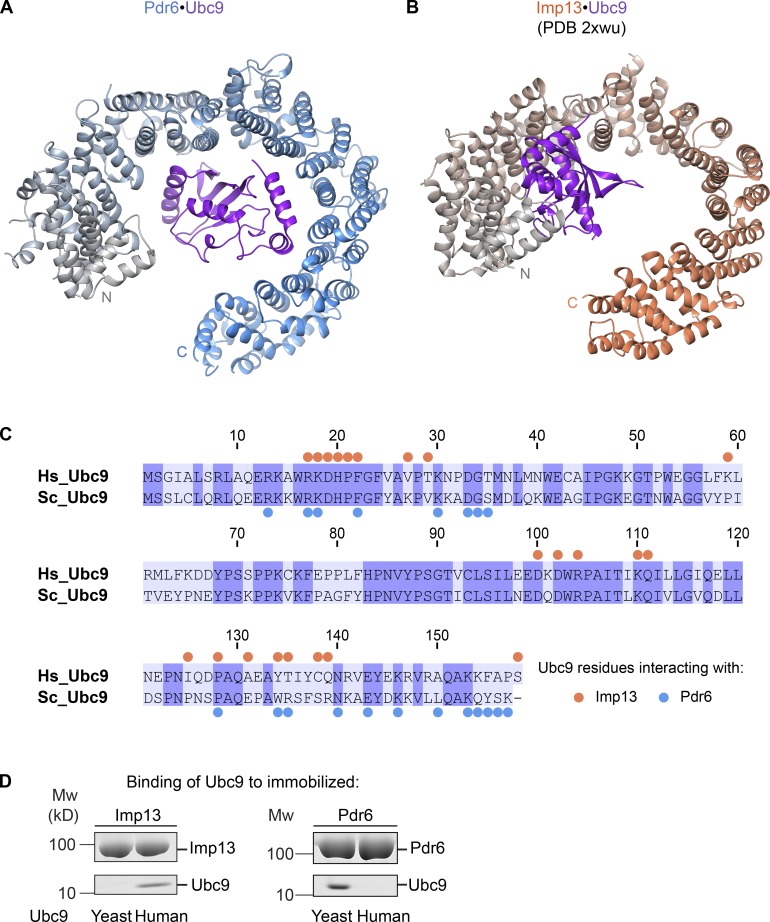Figure 3.
Comparison of import cargo recognition by Pdr6 and Imp13. (A and B) Ribbon representations of Pdr6•Ubc9 (A) and Imp13•Ubc9 complexes (B) are shown. Corresponding Pdr6 and Imp13 structures are aligned with respect to the first three HEAT repeats of the NTRs and shown in the same orientation as in Fig. 2 D. Pdr6 is depicted with a color gradient from gray (N-terminus) to blue (C-terminus) while Imp13 is from gray to salmon. Ubc9 is shown in purple. (C) Sequence alignment of human and yeast Ubc9 is shown with identical residues shaded in purple. Blue and salmon dots represent Ubc9 residues that contact Pdr6 and Imp13, respectively. (D) H14-ZZ-bdSUMO–tagged Pdr6 and Imp13 (1 µM) were incubated with human or yeast Ubc9 (2 µM). Formed import complexes were retrieved via tagged NTRs, eluted by (the tag-cleaving) bdSENP1 protease, and analyzed by SDS-PAGE and Coomassie blue staining.

